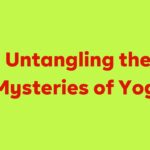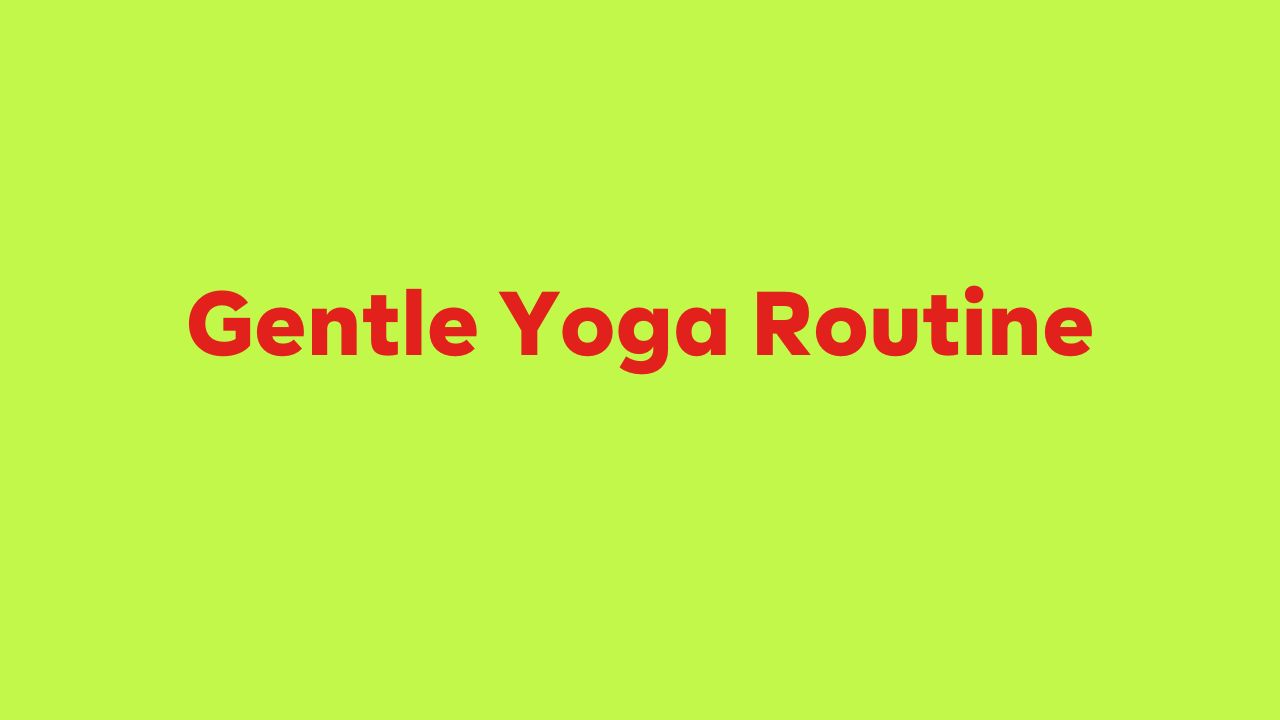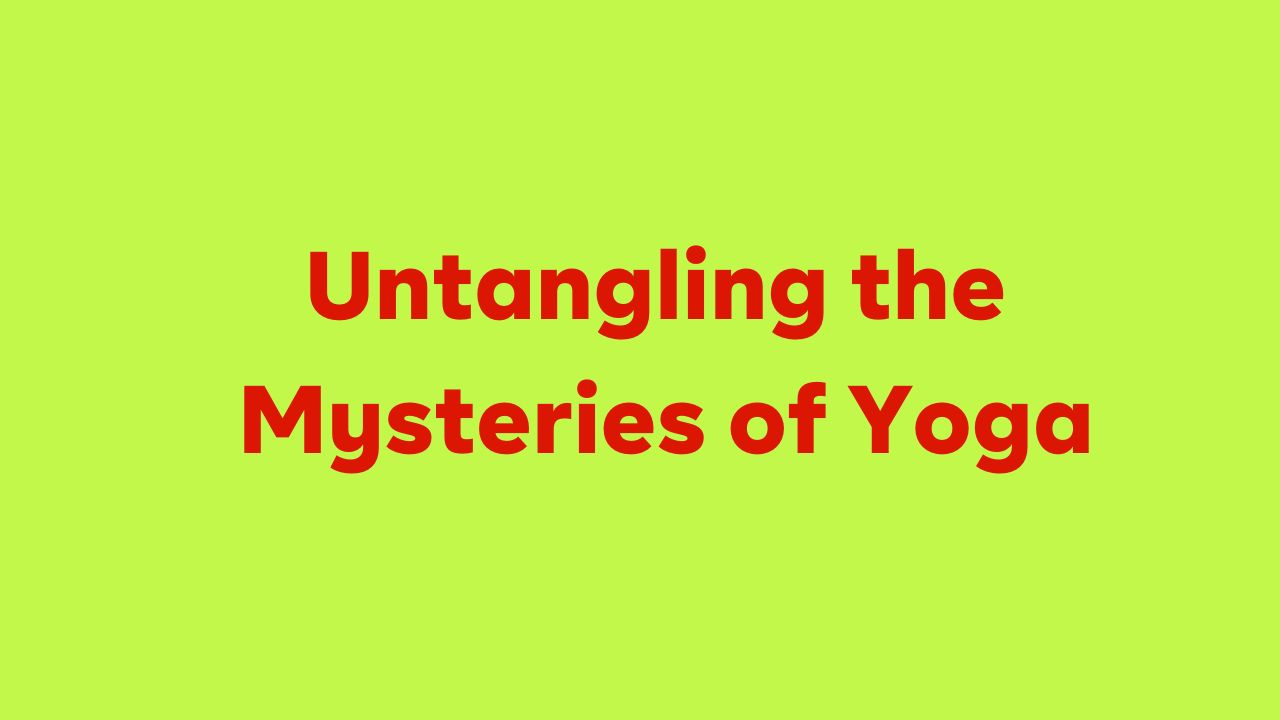Transform Your Mood with this Gentle Yoga Routine
Today, we will be engaging in a therapeutic yoga flow designed to promote mental well-being. This sequence has been carefully crafted to instill a profound sense of tranquility and ease within you.
By moving through these poses, you will cultivate a deep connection with your physical body, while simultaneously honing your awareness of each breath that enters and leaves your body. As you engage with this practice, you will find yourself becoming more attuned to the present moment and more adept at navigating your thoughts in a mindful manner.
The gentle movements in this yoga flow are intended to anchor you in the present, drawing your focus away from past worries or future anxieties into the here and now.
Inhale slowly as you transition between poses, allowing yourself to fully inhabit each moment during this grounding practice. With each exhale, release any tension or negativity that may have accumulated within you.
This session is an invitation to compassionately embrace where you are mentally and emotionally today. Ultimately, through the practice of this calming yoga flow for mental health, you will emerge with a renewed sense of peace and balance within yourself.
Boost Your Mental Health with an All-Level, Slow Seated Yoga Session
Start by sitting in a comfortable position with your knees bent and the soles of your feet on the ground. Wrap your arms around your legs and rest your forehead on your knees or between your knees. You can place your hands together or on top of your ankles or shins.
Close your eyes and focus on feeling grounded. Take a moment to arrive in your body and become aware of how you feel. Without judging, simply observe your thoughts and feelings. Subsequently, begin to pay attention to your breath.
Inhale deeply through your nostrils, then release the breath through your mouth.. Inhale deeply through both nostrils, filling your lungs, then exhales completely. Take two more deep breaths like that. On your last exhale, feel your body soften and relax.
Sink into stillness and surrender. Take two more nourishing breaths, breathing into your belly. On your next inhale, slowly lift your forehead away from your knees and place your palms on top of your knees.
All-Levels Relaxation: 30-Minute Seated Cats and Cows Yoga Practice
Let’s start by transitioning into seated cats and cows to gently warm up the spine. As you inhale, draw your chest and belly towards your thighs, lifting your heart. Then, exhale as you straighten out your arms and round through the upper back, bringing your chin to your chest.
As you continue to breathe, each inhale can lift your heart in a cow pose, while each exhale can encourage rounding through the shoulder blades in a cat pose. Focus on tilting your tailbone forward and bringing your belly towards your thighs with each breath.
This movement helps increase flexibility in the spine and improves circulation in the back muscles. Take it slow and listen to your body as you flow through these seated cat-cow poses.
As you exhale, focus on tucking the tailbone and drawing the belly in towards the spine. Take a few moments to repeat this movement, ensuring that your breath guides each action. As you move through these motions, consider incorporating intuitive movements into your practice. Perhaps try rolling your neck a few times or exploring any other natural and fluid movements that arise.
Allow this experience to become a moving meditation, where your breath intertwines with every motion. Pay close attention to how your body responds and flows with each breath, creating a harmonious connection between mind and body.
Embrace the mindfulness of the present moment as you continue to explore intuitive movements in sync with your breath.
Relax, Restore, and Rejuvenate: Discover the Benefits of Child’s Pose Yoga
After transitioning to bound angle pose, start by sitting with the soles of your feet together and your knees open wide. Press your sit bones into the ground and fully extend your spine. With your thumbs on the soles of your feet, gently open them up like a book. Begin massaging the arches and edges of your feet by pressing your thumbs into them.
Feel the release of tension in your feet as you continue to massage, paying attention to any areas that feel particularly tight or tender. Take deep breaths and relax as you work on each foot, allowing yourself to fully engage in this self-care practice.
This gentle massage not only helps to relieve tension and promote relaxation, but it also encourages healthy blood flow in the feet. After giving attention to both feet, take a moment to notice any changes or sensations in how your feet feel.
As you come out of bound angle pose, slowly straighten the legs and give them a gentle shake or stretch if needed. Take some time to appreciate the grounding sensation in your feet and be mindful of how this simple practice has benefited both body and mind.
Gently massage the tops of your feet with your fingers to release any tightness. Don’t forget to massage your toes and heels. Wrap your hands around your ankles and take a deep breath to prepare for a forward fold.
Keep your heels close or further away for a less intense stretch. Let your upper body relax and hang heavy as you fold forward. Pay attention to the areas in your body where you sense the stretching. Slowly lift yourself up with a straight spine. Bring your hands under your knees, draw the knees together, and swing the legs to one side. Come onto your hands and knees.
Sit back on your heels and lower your hips to the table top. Then, go into child’s pose at the back of your mat. Spread your knees wide and stretch your arms in front of you. Rest your forehead on the mat and relax, feeling your breath and body.
Unwind and Unplug: Slow Spinex Pose Yoga for Inner Peace!
As you prepare to come into a twist, begin by lifting your head up. Thread your right arm underneath the left arm with the palm facing up, and bring your right ear to the mat. Keep pressing your hips back towards the heels to feel the stretch in your right shoulder. Then, return to the center by lifting your head and extending the right arm.
Next, thread the left arm underneath the right arm, bringing your left ear to the mat while breathing deeply. As you do this, continue pressing the hips back to maintain a strong stretch in your shoulders.
Take a moment to breathe and focus on feeling the sensation in each side of your body as you move through these twists. Remember to listen to your body’s cues and adjust as needed for comfort and safety during this movement.
Twist your left shoulder and relax your face, low back, and legs. Lift your head and come back to center, extending your left arm in front of you.
Rest your forehead on the mat and take two to three breaths. On your next inhale, lift your forehead and gaze at the top of your mat. Slide your arms forward, lifting your chest away from the mat.
Prepare to come down into cobra by dropping your hips and belly to the mat, with your palms underneath your shoulders. Inhale to lift your heart and find a baby cobra, then exhale and release back down.
Press yourself up through tabletop and back through child’s pose with your hips over heels and forehead on the mat. Repeat this two more times.
Lift your body into a baby cobra, keeping your elbows close and your shoulders down. Look up, then move into tabletop position and then child’s pose. Take a breath and lift your head again. Slide forward, lift your chest, and press up a little deeper.
You can try full cobra if you’re ready, or keep your elbows bent. Then lower into sphinx pose, with your elbows under your shoulders and forearms parallel. Press into your feet and imagine pulling your elbows and forearms back. Lift your chest and take one more breath before slowly bringing your chin to your chest.
All Levels Welcome: Slow Seated Forearm Plank & Forward Fold Yoga
Begin in a forearm plank position, tucking the toes under and lifting the kneecaps off the mat. Press into the forearms and lift the hips while engaging your core. Round through the upper back slightly, maintaining a straight spine and firmly pressing into the forearms.
Feel your inner strength as you hold this position, allowing your arms to shake if they need to. After two breaths, slowly drop your knees and come into a seated position with hands resting in your lap. Close your eyes, noticing how your body feels and allowing your breath to nourish and calm you.
Gently open your eyes and come into a seated twist by placing the right hand behind you. Pause here for a few breaths before transitioning into another posture.
Start by sitting up straight with your legs crossed. Extend your left hand to the outer side of your right knee and smoothly rotate your torso towards the right, gazing over your right shoulder. Repeat the motion on the opposite side by switching hands and turning in the same manner.
After returning to center, interlace your fingers behind your back and press your palms together as you straighten out your elbows. Press the fist down towards the ground to feel a stretch and opening in the chest.
As you hold this position, focus on deep breathing and feeling the release of tension in your upper body. This stretch can help improve flexibility in your spine and shoulders while also promoting better posture.
Remember to keep a steady breath throughout these movements, allowing yourself to relax into each stretch. Take your time moving through each transition, paying attention to how it feels in your body.
By incorporating these stretches into your routine, you can promote mobility and alleviate stiffness in the upper body. Be mindful of any discomfort and adjust the intensity of the stretch as needed.
Hinge at the waist and lower your head towards the floor.Lift your fists and arms up towards the ceiling. You can stay here or lift your hips away from your heels and come onto the crown of your head.
Keep lifting your fists and arms up, then gently shift your arms to the left, feeling a stretch in your right shoulder. Come back to the center and then shift your arms to the right, stretching out your left shoulder.
Come back to the center and slowly lower your hips back over your heels. Release your hands in front of you, lift your hips away from your heels, and tuck your toes under. Send your hips back.
Ease Tension and Find Calm through 30 Minutes of Toe Stretching Yoga
To stretch your toes, start by having your fingertips or palms on the mat. If this stretch feels intense, consider finding a comfortable seated position with an upright posture. You can place your hands on top of your thighs, aligning your head over your heart and heart over pelvis, while relaxing your shoulders and closing your eyes.
Wherever you are, focus on taking deep breaths and feeling a sense of relaxation and comfort in the stretch. This toe stretch can help to relieve tension and improve flexibility in the feet and lower legs.
Paying attention to your body and not pushing beyond your comfort zone is crucial.
With regular practice, this pose can become easier and more beneficial for overall mobility and well-being.
Bend your ankles and breathe gently. Open your eyes and place your hands in front of you. Untuck your toes and tap the tops of your feet on the mat. Swing your legs in front of you and sit up straight. Bend your left knee and place your left foot inside your right thigh.
Twist to the left, lifting your left arm and reaching for your right toes. Breathe and stretch. Slowly come back up and turn to face your right leg, keeping your right foot flexed. Breathe out and bend over your right leg, letting your upper body hang down.
Bring your forehead toward your knee or your belly toward your thigh. You can let your arms rest alongside your right leg, or reach for the back of your leg, shin, or toes.
Feel the stretch in the back of your right leg. Breathe in slowly and lift yourself up. Then switch legs, extending your left leg and bending your right knee. Position your right foot’s sole against your left thigh. Turn to the right and bring your left hand to your right knee.
As you breathe in, reach your right arm up and bend to the left as you breathe out. Reach your right fingertips toward your left toes. Keep your breath steady and your sit bones planted firmly. Lengthen through the side of your body as you breathe in and lift yourself up, coming back to the center.
Bend your left leg and take a deep breath. As you breathe out, gently walk your fingertips forward, bending at the waist. Reach your forehead or belly towards your thigh, feeling the stretch in the back of your left leg.
Keep your left foot flexed and relax your arms by your sides. Or, reach for your left leg and gently lift yourself up, keeping your spine straight.
Now, straighten your right leg out in front of you, pointing your toes up. Ground down through your sit bones and lengthen your spine. Take a deep breath and slide your arms down your legs, bending at the waist. Relax your upper back and reach for your legs or toes.
Breathe in deeply and out slowly. Next, lift yourself up and move to the center of your mat.
Recline on your back and embrace your knees, pulling them toward your chest. You can stay still or gently rock from side to side to massage your lower back.
Then, place your feet on the ground, hip-width apart, and place your arms alongside your body with your palms facing down. Make sure your fingertips can slightly brush the heels.
Find Inner Peace and Equilibrium with Our Slow Seated Bridge Pose Class
As you prepare to transition into bridge pose, focus on evenly pressing into the feet to lift the hips up and away from the mat. Feel the energizing sensation as you engage your leg muscles and squeeze them together.
As you press into your palms, actively lift your hips while drawing your chin away from your chest to lengthen your neck.
Consider adjusting your arm position by either keeping them where they are or interlacing your fingers and bringing the palms into a fist. If you choose to interlace your fingers, gently press the arms into the ground for additional support as you continue to lift. This can help create a more stable base for the posture.
When performing bridge pose, it’s important to maintain a strong connection with both feet and palms while finding ease in lifting the hips higher.
Focus on breathing deeply and remaining mindful of any tension in the body. By incorporating these details into your practice, you can enhance both the physical and mental benefits of bridge pose.
Lift your hips a little higher and take a deep breath.
Gently release your fingertips and lower your hips and back to the ground. Drop your knees to each side and move them back and forth.
Straighten your left leg and press your heel into the ground. Hug your right knee to your chest and make circles with your right ankle. Then, twist your body by bringing your right knee across to the left side.
Place your left hand on top and extend your right arm to the side. Look over to the right and breathe deeply into your belly.
Breathe as you twist, bringing your right knee to the center. Then, extend your right leg and press your heel into the ground. Hug your left knee into your chest and make circles with your left ankle. Roll your foot in both directions.
Draw your left knee across your body to the right side, placing your right hand on top and extending your left arm out to the side. Look over your left shoulder and press your left shoulder blade down.
Bring your left knee back across your body and hug both knees into your chest.
Wrap your arms around your legs and bring your forehead towards your knees. Find gratitude for your body and all that it allows you to do.
Release your head back down to your mat when you’re ready. Sit with your legs straight in front of you, heels on the edges of the mat, toes pointing out. Or, bring your feet together and let your knees fall to the sides.
Put your left hand over your chest and your right hand on your stomach. Shut your eyes, inhale deeply, and then release your breath. Check your body for tension and use your breath to relax.
Stay in this position for a short amount of time. You can stay longer if you want.











One thought on “Relaxation Guaranteed: Transform Your Mood with this Gentle Yoga Routine”
Comments are closed.